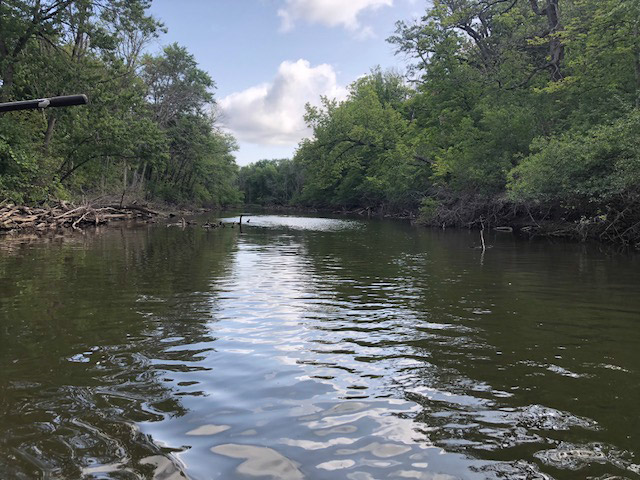Perhaps one of the more important observations of the 2018 bioassessment is that the entry of the large volumes of treated municipal wastewater were beneficial and likely offset some the otherwise detrimental impacts that are exported downstream from the upper modified reaches of the mainstem. Four consecutive sites beginning at site 13-1 downstream from the NSWRD Gurnee WRF were in full attainment of the General Use for aquatic life while exhibiting moderate and low Susceptibility rankings and very low Threat rankings. The sites downstream from Mill Creek (13-3) and the NSWRD Waukegan WRF (13-2) were in partial attainment with the fIBI values missing attainment by 8.5 and 6 units respectively. These two sites also had very high Restorability rankings. Partial attainment followed at the next four consecutive sites again with the fIBI being the limiting factor, but also incrementally improved over 2016 with two sites missing attainment by only 2 and 3 units. With only one exception, these sites also had very high Restorability rankings. Site 16-2 was in full attainment followed by non-fair at the most downstream site (16-1), but with the fIBI missing by only 0.5 units. Here, too, Susceptibility rankings were moderate to low, but Threat scores were very low. The biological results downstream from the entry of treated wastewater at site 13-3 were better both in terms of AQLU status and the fIBI and mIBI scores than at the five upstream most sites that were in non- fair and non-poor attainment status and with three (3) of five (5) fIBI scores in the very poor range. These upstream sites also had the lowest Restorability rankings in the mainstem being in the moderate range. We expect that conditions could continue to improve downstream from Mill Creek provided that wastewater effluent quality is maintained, but addressing the upstream channel and flow alterations is needed to reduce the risk of continued or future impairment to downstream sites.

Biological and Water Quality Assessment of Upper Des Plaines River: Year 2 Rotation 2018
MBI Upper Desplaines 2018 Year 2 Report 20200804 DRWW.pdf
Chris Yoder
